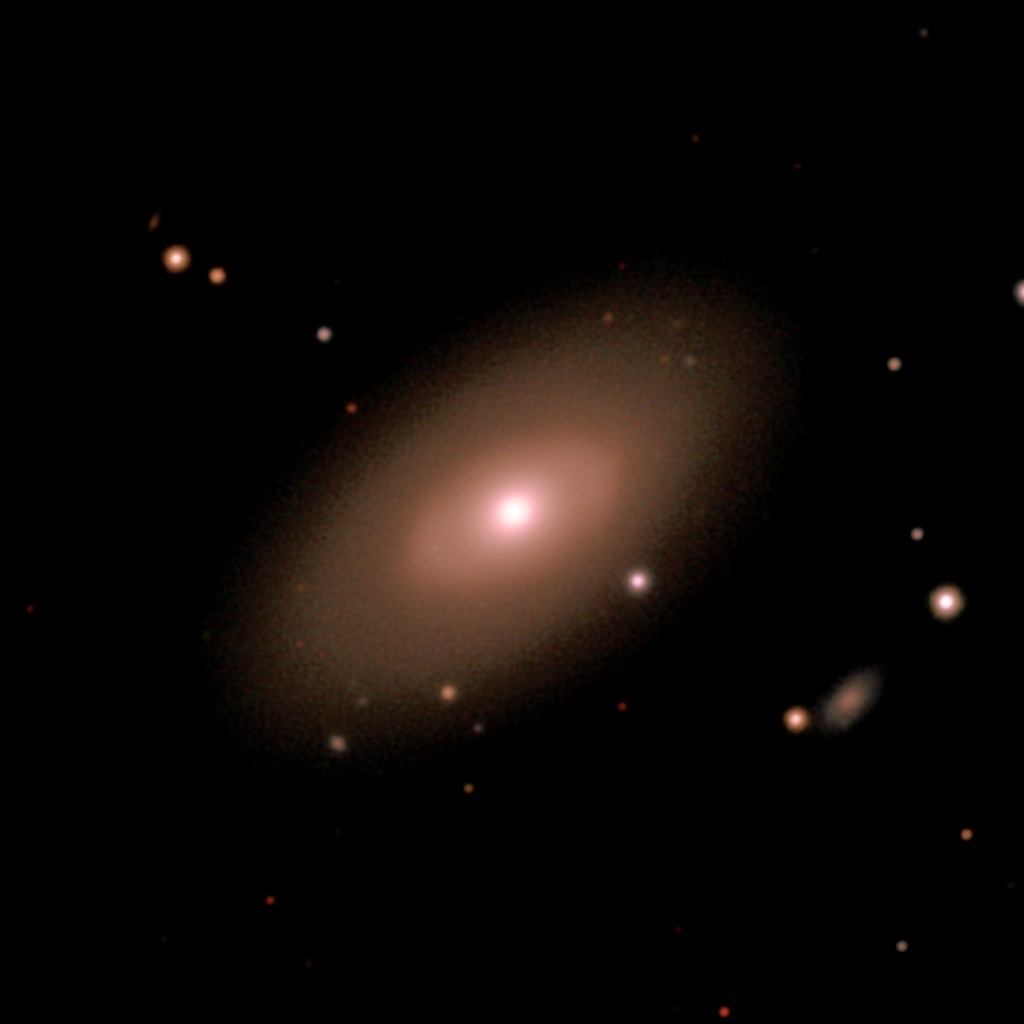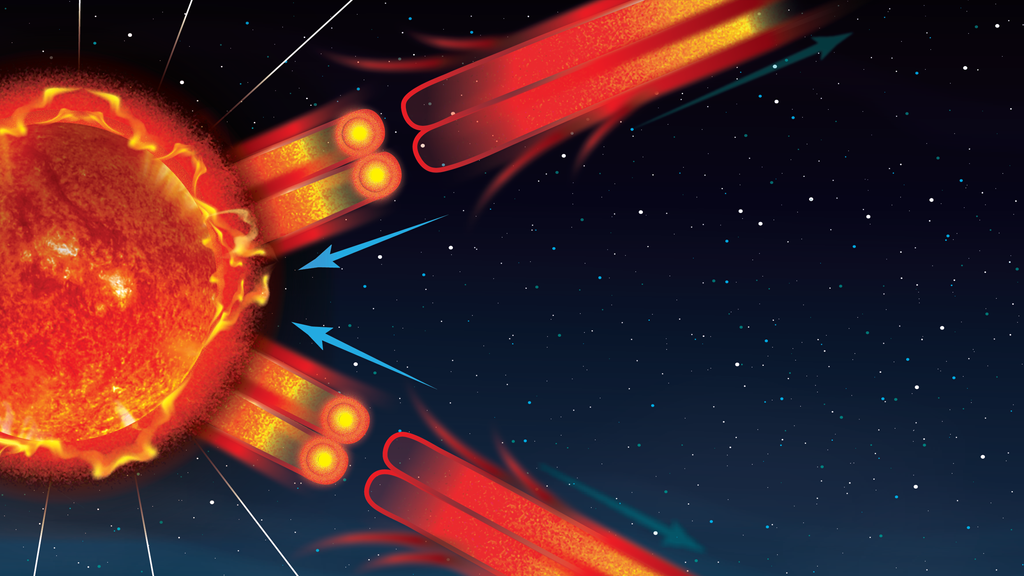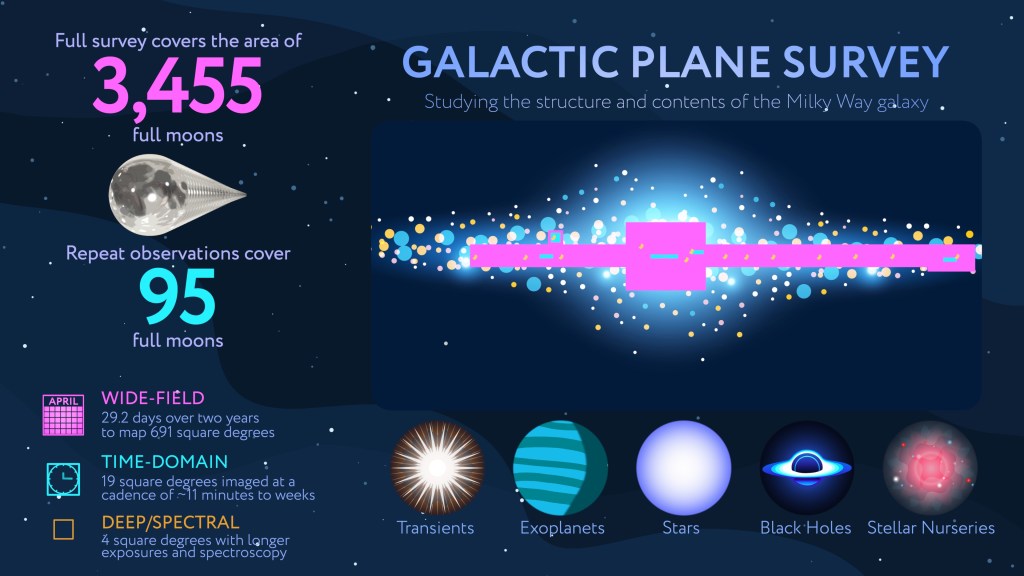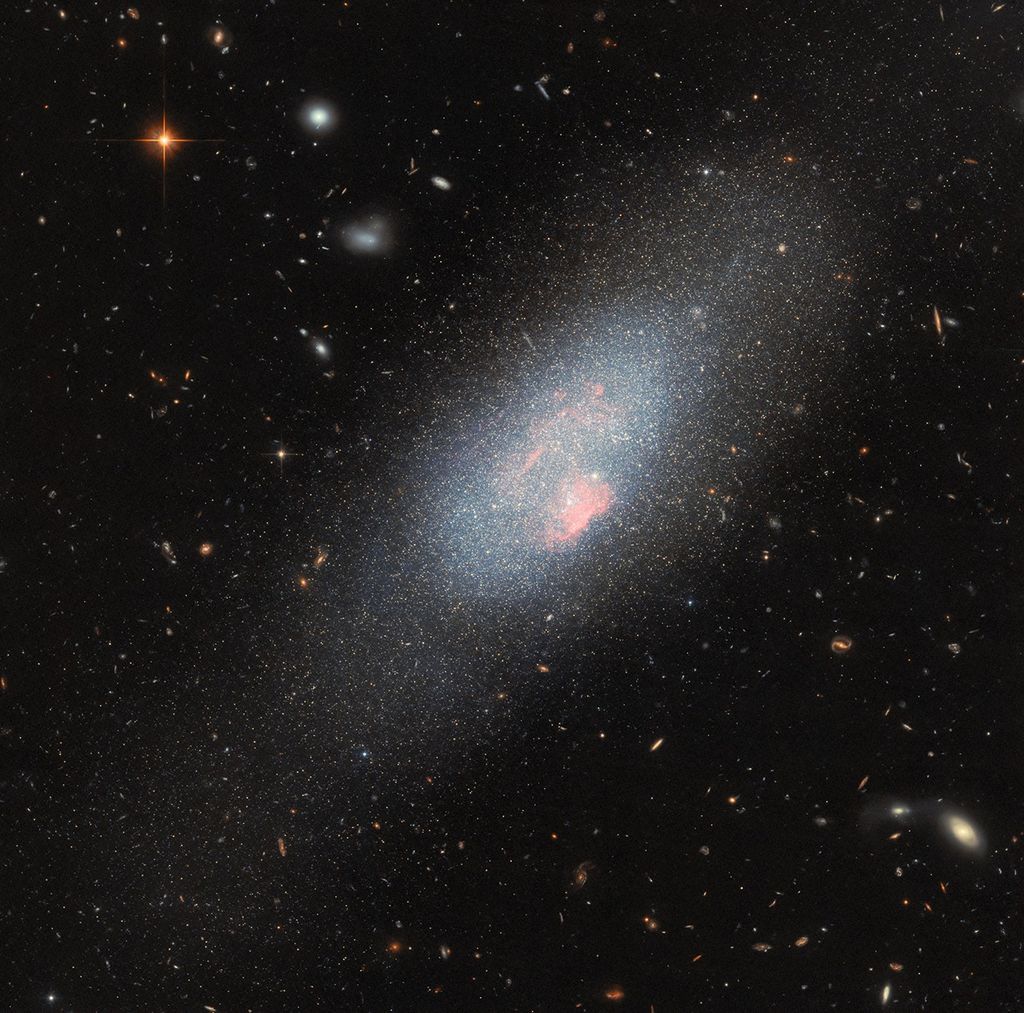1 min read
Signature of a White Dwarf
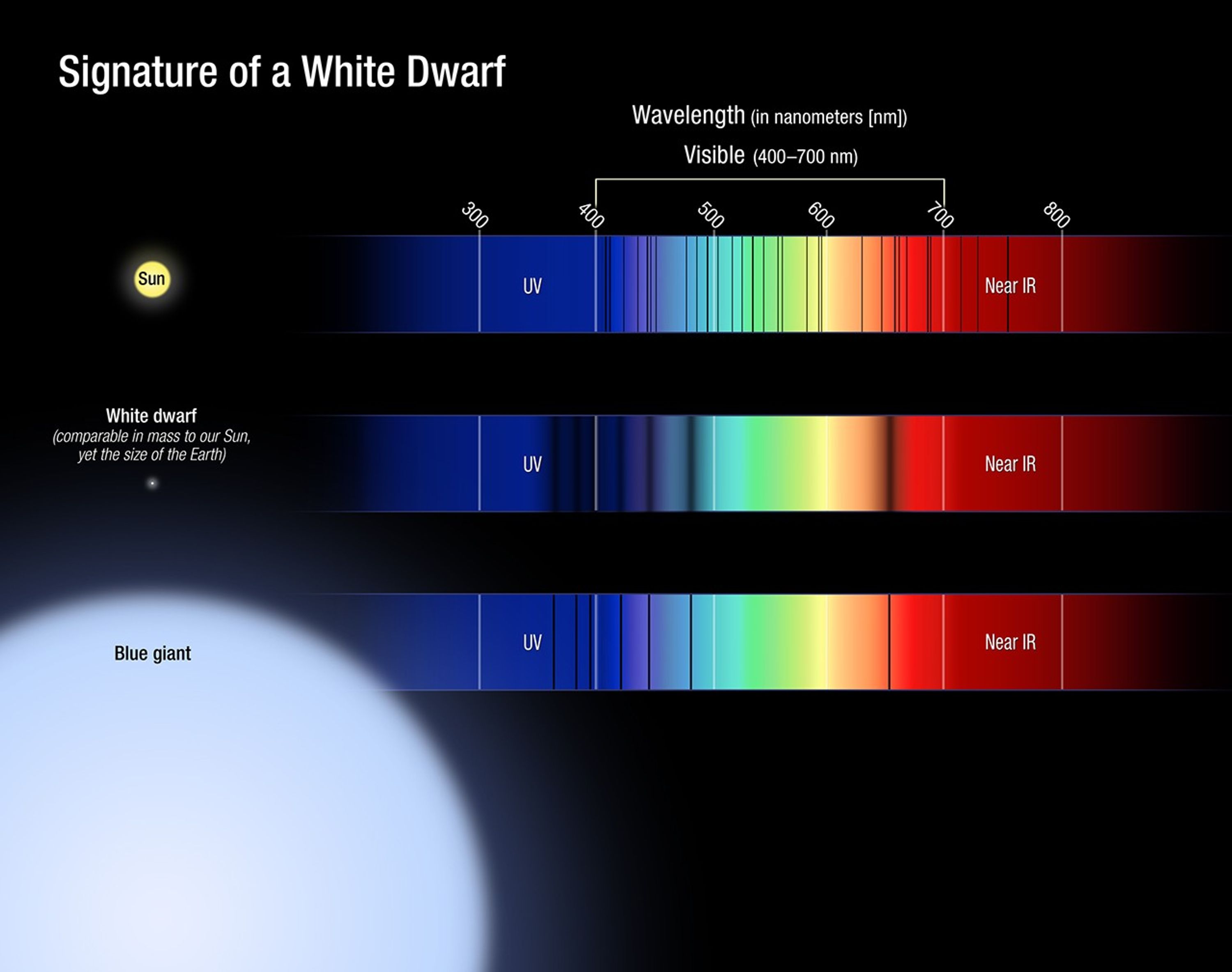
White dwarf stars have remarkable properties, yet they are very simple. These stripped cores of normal hydrogen-burning stars are about 1 million times denser than matter on Earth. This means that a tablespoon of material from a white dwarf's surface would weigh as much as a school bus on Earth. White dwarfs also have no fuel to generate energy, and most of their atmospheres contain a single atom, hydrogen.
The figure illustrates the spectral features of a white dwarf, in comparison to the Sun and a blue giant. The white dwarf spectrum is simple, containing only absorption lines from the hydrogen atom. But, unlike the same lines in the blue giant spectrum (a bloated star with a low density), the features in the white dwarf are broadened due to the intense pressure on the surface of the star (essentially, the energy levels of the atom are being perturbed). This broadening of the lines, as well as their depth, is directly related to the mass and temperature of the star. Unlike for most stars, astronomers can therefore reliably establish fundamental properties for white dwarfs from their spectra.
- Release DateMay 30, 2012
- Science ReleaseStellar Archaeology Traces Milky Way’s History
- Credit
Related Images & Videos
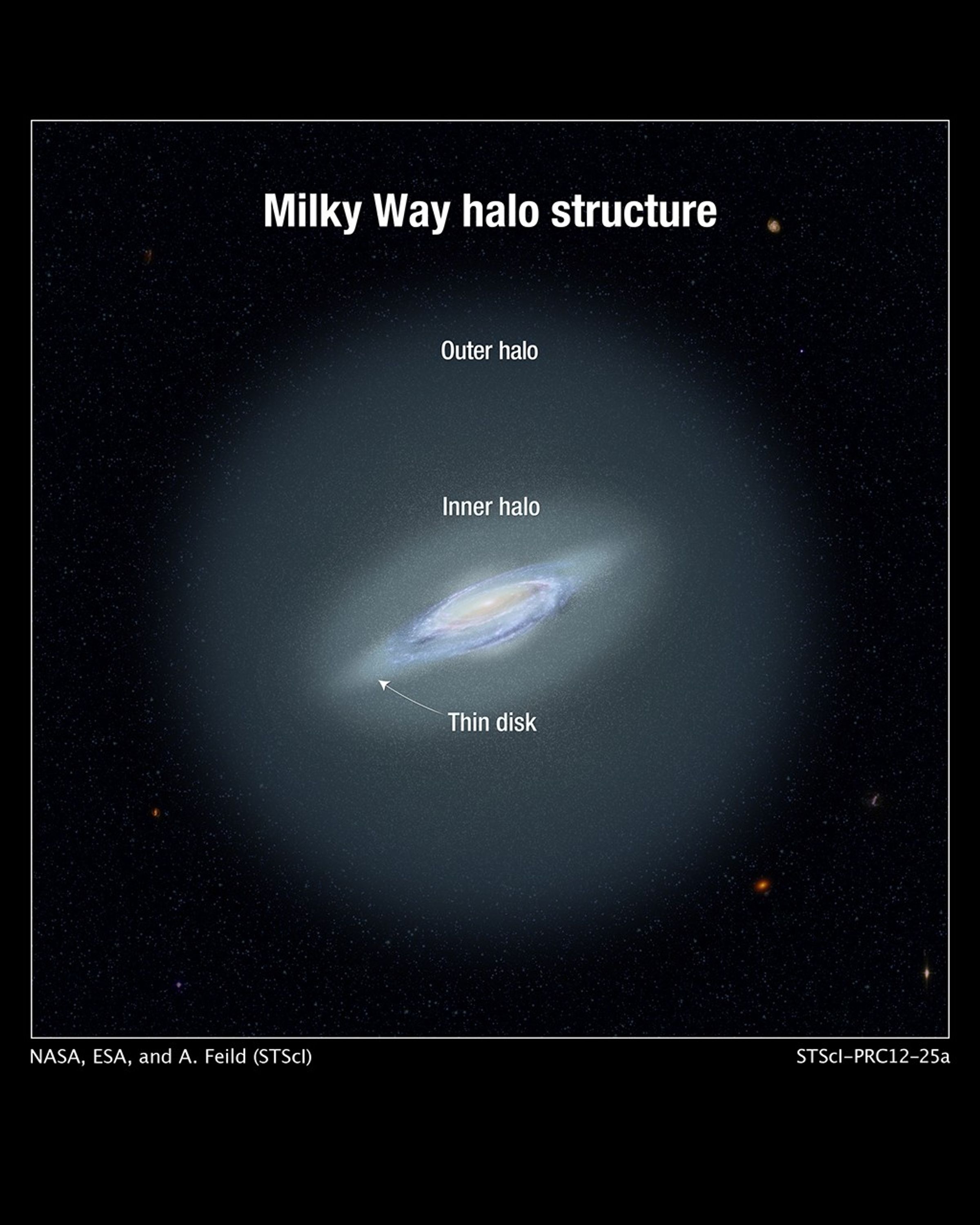
Structure of Milky Way's Halo (Artist's Illustration)
This illustration shows the Milky Way galaxy's inner and outer halos. A halo is a spherical cloud of stars surrounding a galaxy. Astronomers have proposed that the Milky Way's halo is composed of two populations of stars. The age of the stars in the inner halo, according to...
Share
Details
Claire Andreoli
NASA’s Goddard Space Flight Center
Greenbelt, Maryland
claire.andreoli@nasa.gov


